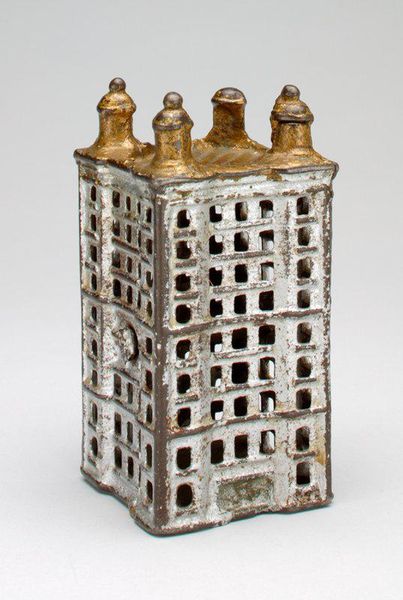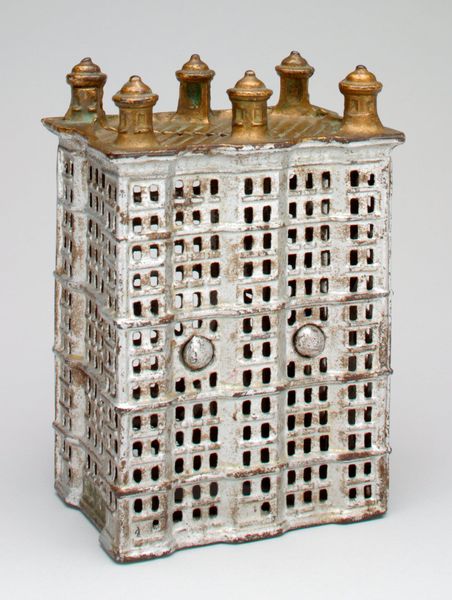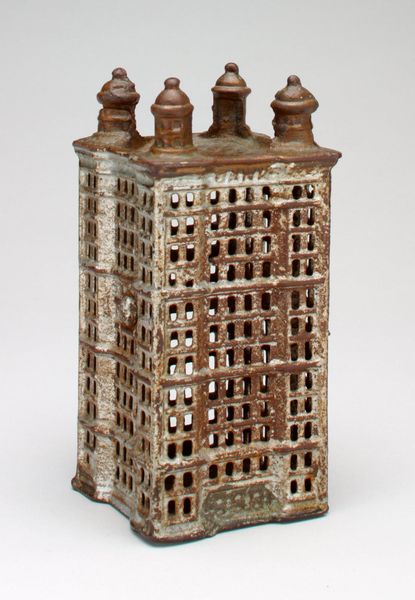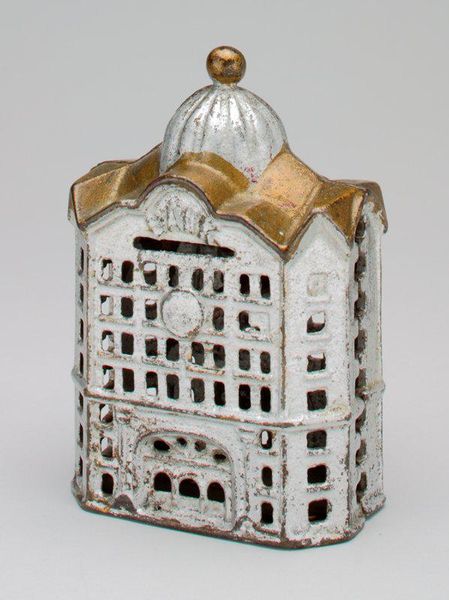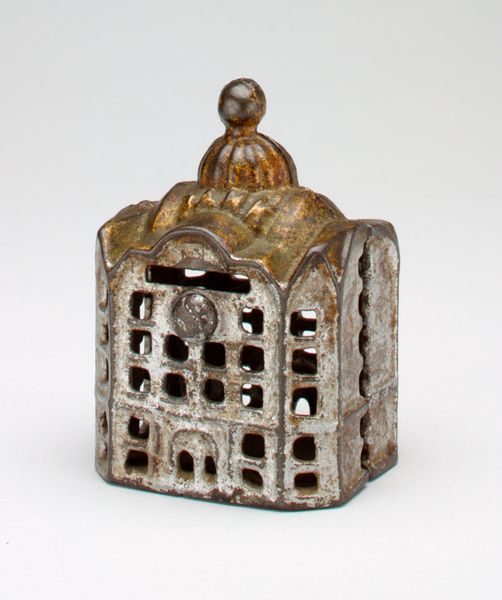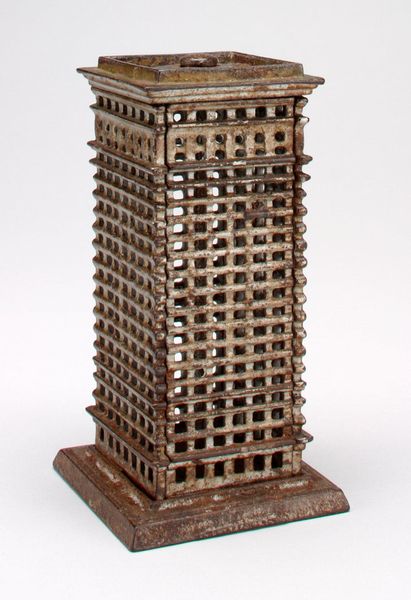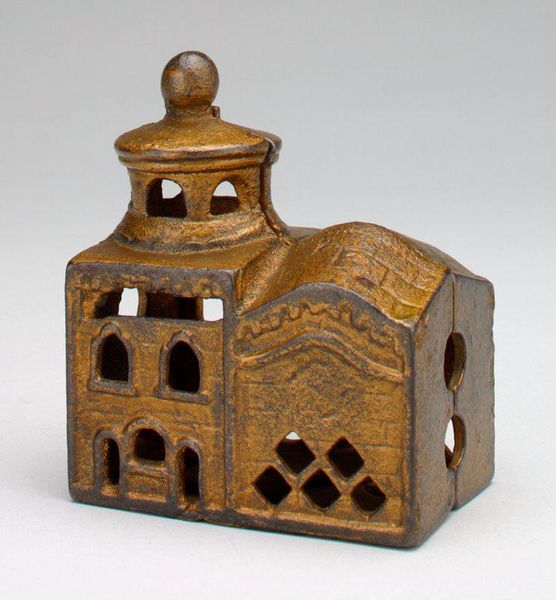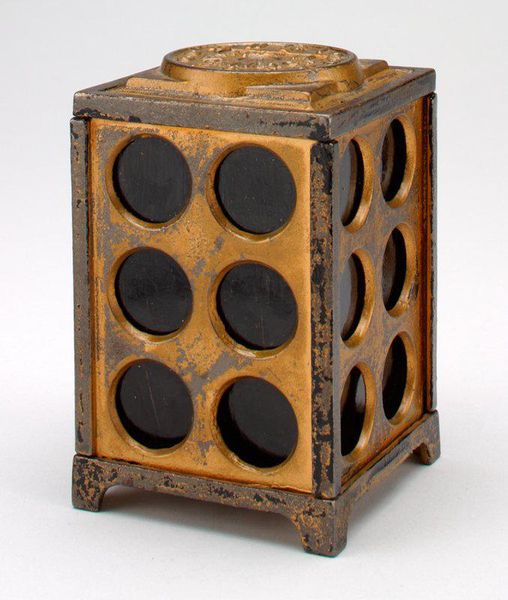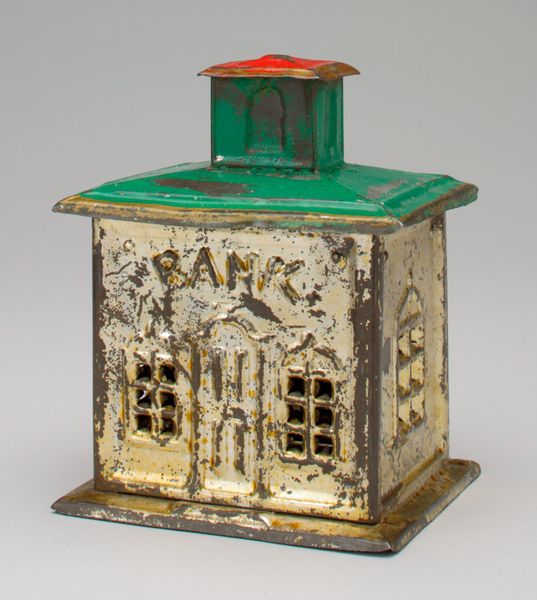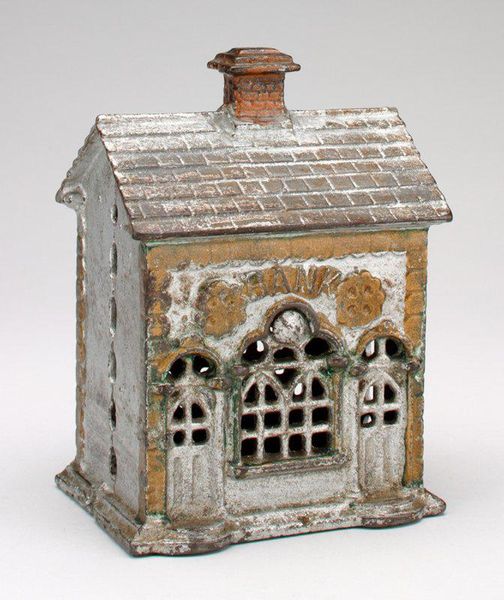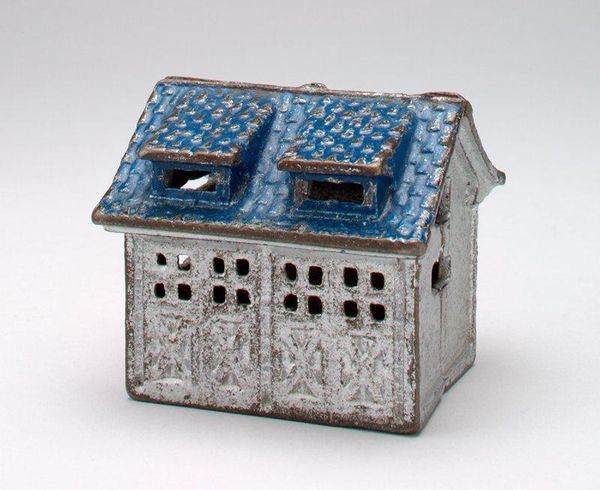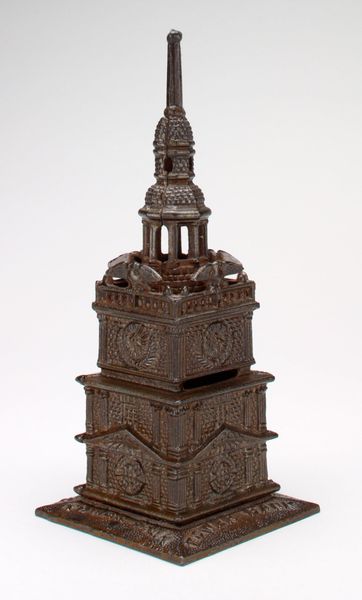
assemblage, metal, sculpture
#
assemblage
#
metal
#
sculpture
#
sculpture
#
cityscape
#
realism
#
statue
Dimensions: 3 5/8 x 1 7/8 x 2 in. (9.21 x 4.76 x 5.08 cm) (approximate)
Copyright: No Known Copyright
Curator: Here we have the "-Skyscraper- still bank" from around 1910, found here in the collection of the Minneapolis Institute of Art and created by the A.C. Williams Company. Editor: It has a curious, haunting presence despite its small scale, doesn’t it? The repeated windows create a rhythmic, almost musical effect. I’m also fascinated by the palpable wear and tear—a kind of tactile history etched into its surface. Curator: Exactly! It’s made of metal, likely cast iron, and served a very specific purpose. These “still banks” were popular in the late 19th and early 20th centuries, encouraging thrift. Think of it as a miniature monument to capitalistic aspirations finding its architectural expression. Editor: The craftsmanship and material tell a compelling story. Cast iron, en masse, hints at the industrial boom that enabled such precise replication, mass producing miniature buildings affordable to almost any kid who saves. This piece challenges a sort of artistic hierarchy. Is something like this craft or sculpture? Curator: Precisely! And in placing this bank—made to store money, so that anyone can engage and literally *buy* a future--the bank functions almost like propaganda. Note the architecture, its imitation of emerging skyscrapers is significant in that cultural push for upward mobility. Editor: Considering the production era adds to the bank’s complexity. It highlights the complicated social underpinnings of this seemingly innocuous object, really demonstrating our shift from creating “useful” goods to the commodification of the “American dream”. Curator: Indeed. I think, on a larger note, this helps viewers today question our engagement with financial structures by looking at those very physical connections of industrialization, urban aspiration, and even child's play! Editor: Yes, an almost melancholic piece, offering a lens into the intricate connections between the material, the market, and social values of the 20th Century. Curator: And perhaps our present moment, too. Thanks for sharing those insights!
Comments
No comments
Be the first to comment and join the conversation on the ultimate creative platform.
